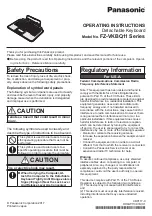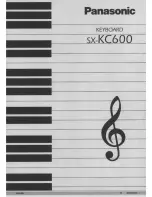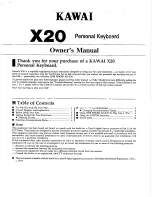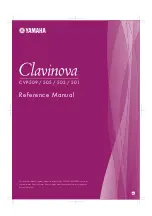
4-34
Programming Your PC2
Troubleshooting
Name and save the setupÑyou might want to name it something Like
Local Off
or
Seq Control
.
Now you have a MIDI-only setup with a single zoneÑwhich is equivalent to being in Internal
Voices mode with the Local Control parameter turned off.
There are several advantages to the setup method. First of all, the Local Control parameter sets
itself to
On
each time you power up the PC2. The second reason is that you can edit the MIDI-
only setup to assign controllers to speciÞc values useful for sequencing.
The Þnal reason has to do with selecting programs. A typical way to choose programs for each
recording track is to choose them in your sequencerÑby selecting them manually, or by
inserting bank-select and program-change messages in each track.
Many people prefer to make these program changes on the receiving instruments themselves,
which you can do very conveniently on the PC2 using the MIDI Recv menuÑbut not if youÕve
used the quick method to turn local control off globally.
If you have the MIDI-only setup, however, you can leave the Local Control parameter set to
On
,
enabling you to use the MIDI Recv menu to select programs for each channel. So when youÕre
sequencing, just call up the MIDI-only setup, and youÕre ready to go.
Recording to a Sequencer While in MIDI Setups Mode
Setups transmit MIDI information on multiple MIDI channels, playing different programs on
different channels. This is the same thing a sequencer does: you have different tracks, sending
information on different channels. But on most sequencers, a track can be assigned to a single
channel only. Therefore one track can't play a setup; it can play only a program.
To record a setup, you must set a sequencer to multi-record. Typically this involves recording to
two or more tracks simultaneously, with each track set to a different channel. (There are some
sequencers that let you multi-record to a single track, and the sequencer keeps the various
channels of information separate even though they are on one track.) As you record into the
sequencer, the data is then routed to different tracks depending on what channel the
information is on. Then once you play back the sequence, each track plays the individual
programs on the different channels, exactly the same way you played them in the setup.
You will have to consult your sequencer manual to Þnd out how to set it up for multi- recording.
You should also remember that if a zone in your setup has the Destination parameter set to
Local
, the information wonÕt be sent to the sequencer.
Troubleshooting
If you run into problems while playing or programming, there are several things you can do to
help troubleshoot the problem.
First of all if you are not getting the expected results from your programming or are having
strange results when hooked to an external device, you can use the MIDIScope utility to see
exactly what MIDI messages are being received by the PC2Õs sound engine.
Press the
Global
button, the press
>
until you see
MIDIScope
. (Or you can hold the
>
button
and it will quickly scroll through the parameters.) Then press
Enter
. The display says
ÒMIDIScope Any Button Quits.Ó Now the display will show every MIDI message that the sound
engine of the PC2 receives, whether that message comes from PC2 itself or from the MIDI In
port. You will see exactly what type of message it is along with the value of that message. For
example, a Note On message will show you the note number, along with the attack velocity. A
Controller message will show the controller number along with the controller value. It also
















































